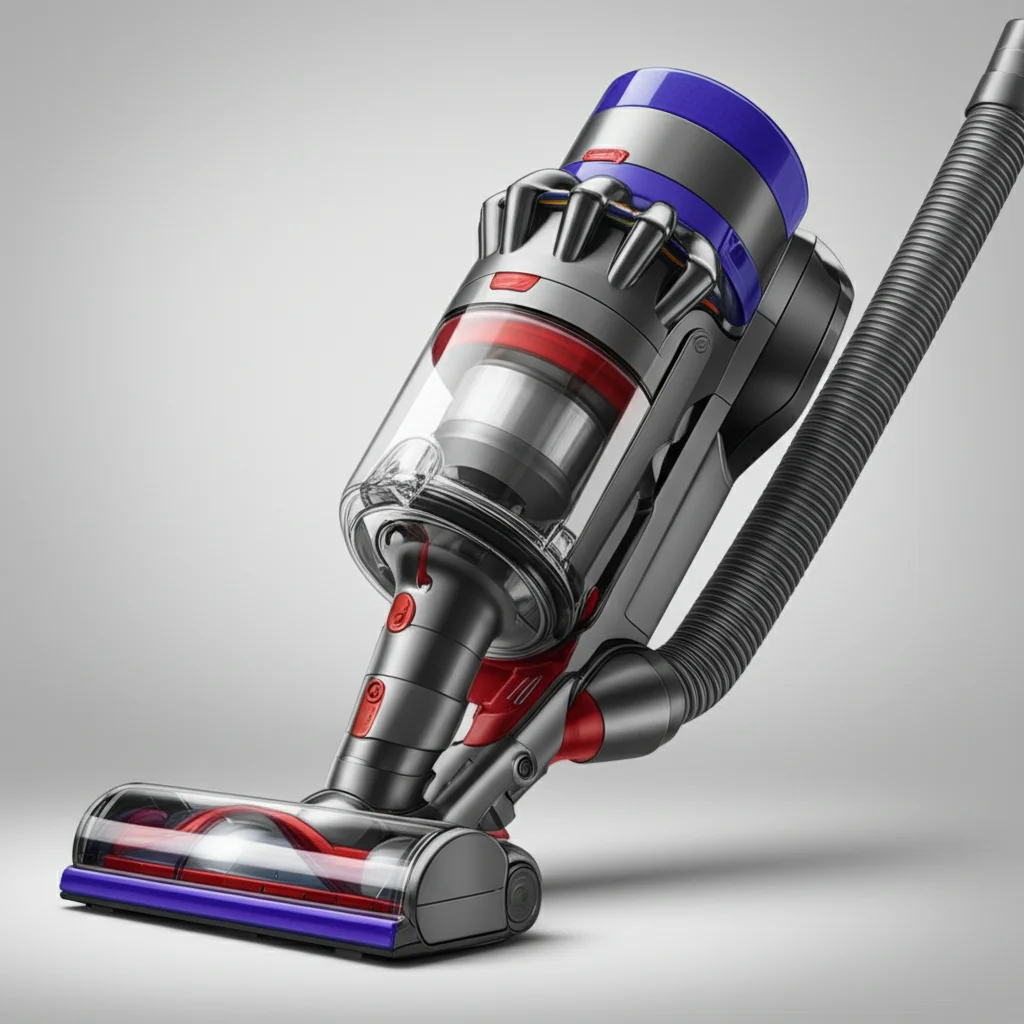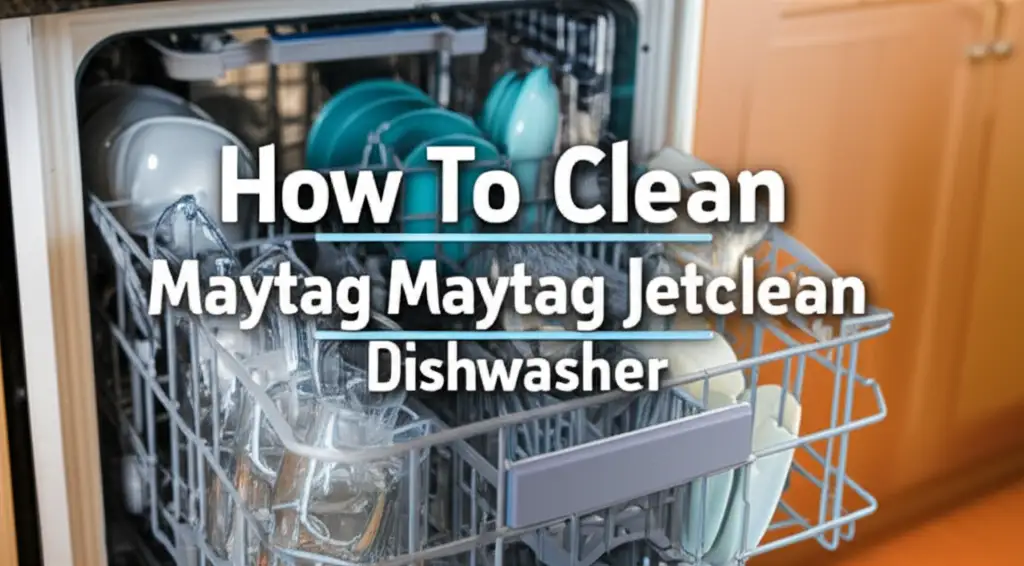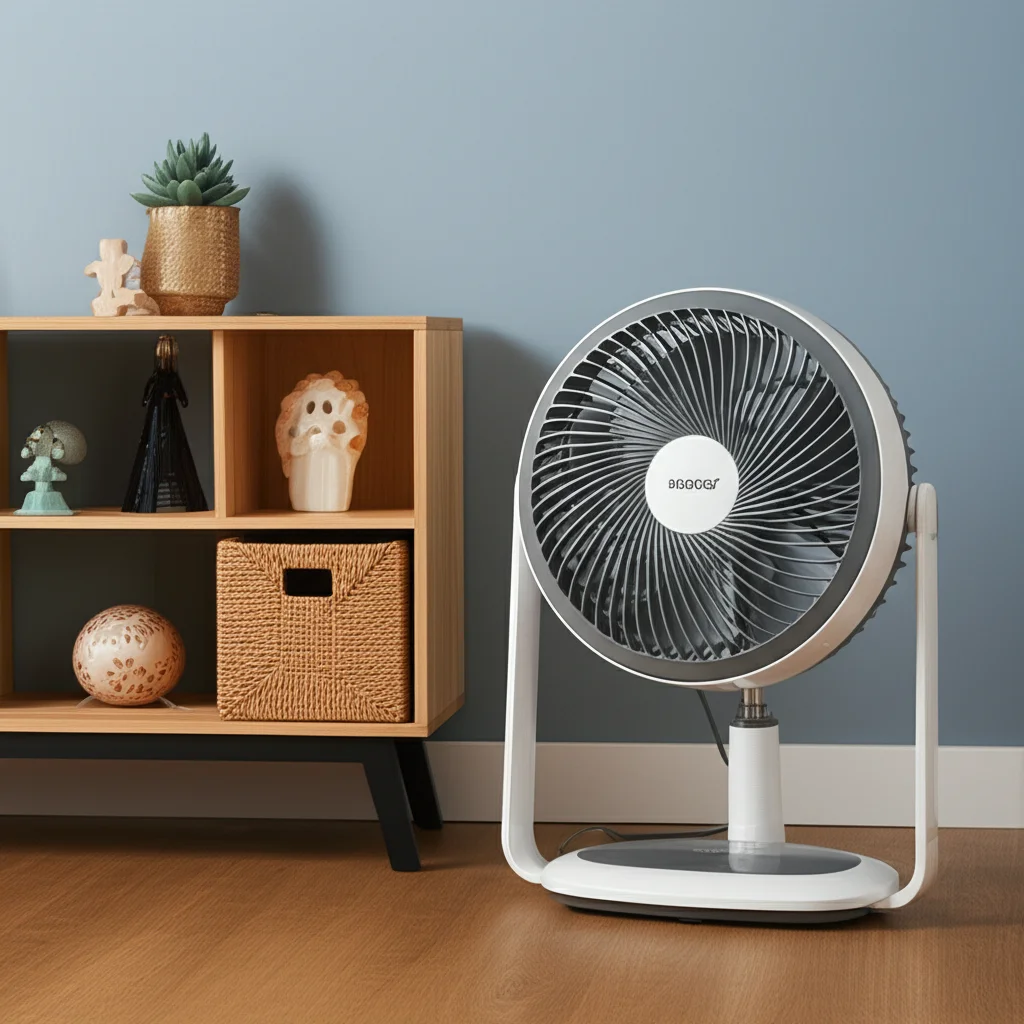· Todd Martin · Home Appliance Care · 19 min read
How To Clean Dyson Canister

Efficiently Clean Your Dyson Canister for Optimal Performance
Your Dyson canister vacuum works hard to keep your home clean. Over time, dust, dirt, and debris build up inside its components. This buildup can reduce suction power and affect overall performance. Learning how to clean your Dyson canister correctly is crucial for its longevity and effectiveness. I found this out firsthand when my vacuum started losing its usual powerful suction.
A clean Dyson canister ensures maximum airflow and filtration. This helps your vacuum pick up more dirt and maintain air quality in your home. This guide will walk you through each step of the cleaning process. We will cover everything from basic emptying to deep cleaning hidden components. You will learn how to restore your Dyson’s suction power and keep it running like new.
Takeaway
- Regularly empty the Dyson canister bin to prevent suction loss.
- Wash the pre-filter with cold water every 3-6 months.
- Clean the cyclone shroud and inner components carefully.
- Ensure all parts are completely dry before reassembling.
- Address any blockages promptly to maintain airflow.
To clean a Dyson canister, first, disconnect it from power. Empty the dust bin completely. Then, remove and wash any washable filters with cold water. Wipe down the interior of the bin and the cyclone shroud. Let all parts dry fully for at least 24 hours before putting them back together. This process restores suction.
Understanding Your Dyson Canister: Why Cleaning Matters
A Dyson canister vacuum is a significant investment for your home. It provides powerful cleaning for various surfaces. However, its efficiency relies on regular maintenance, especially cleaning the canister. The canister is where all the dirt and debris are collected. It houses crucial components like the dust bin, cyclone assembly, and sometimes filters.
Neglecting to clean the canister can lead to several problems. First, accumulated dust can block airflow pathways. This directly causes a noticeable drop in suction power. Your vacuum will not pick up dirt as effectively. Second, trapped fine particles can put extra strain on the motor. This reduces the vacuum’s lifespan. Finally, mold or unpleasant odors can develop if moisture mixes with trapped debris. This is especially true if you vacuum up damp messes. Regular cleaning ensures your Dyson performs at its best. It also keeps your home healthier. I always notice a huge difference after a good clean.
The Canister’s Role in Vacuum Performance
The canister acts as the heart of your Dyson vacuum’s collection system. Air and debris enter the canister through the vacuum head. Inside, Dyson’s patented cyclone technology separates dust from the air. The heavier dust falls into the clear bin. Cleaner air continues through the filters and out of the machine. If any part of this system gets clogged, the entire process suffers.
A clean canister allows air to flow freely. This maximizes the cyclonic separation. It means more dirt gets captured and less stress is put on the vacuum’s motor. It also ensures that the air exiting the vacuum is truly clean. This is important for allergy sufferers. Keeping this component pristine is vital for your Dyson’s long-term health and your home’s cleanliness. You can extend the life of your entire machine with this simple habit.
Essential Tools and Preparations for Cleaning Your Dyson Canister
Before you begin cleaning your Dyson canister, gather all the necessary tools. Having everything ready saves time and ensures a smooth process. You likely have most of these items around your home already. Preparation is key to a thorough and safe cleaning experience. I always lay everything out before I start. This way, I do not have to stop in the middle of cleaning.
First, you will need a clear workspace. Choose an area that is easy to clean, like a garage, utility room, or outdoors. Lay down old newspapers or a large towel to contain any dust or debris. This protects your surfaces and makes cleanup simpler afterward. Make sure you have good lighting to see all the small parts.
What You Will Need
Having the right tools makes the cleaning process much easier. Here is a list of what you should prepare:
- Soft, dry cloth: For wiping down exterior surfaces and dust.
- Damp cloth (microfiber is best): For cleaning the inside of the bin and other components.
- Small brush or soft-bristled paintbrush: Excellent for dislodging stubborn dust from crevices.
- Scissors or a seam ripper: Useful for cutting away tangled hair or fibers.
- A bucket or sink with cold water: For washing filters and other washable parts.
- A mild, non-abrasive cleaner (optional): For stubborn grime, but check your Dyson manual first.
- Gloves (optional): To protect your hands from dust and debris.
Remember to always unplug your Dyson vacuum cleaner from the power outlet before starting any cleaning or maintenance. Safety comes first. This prevents accidental activation and potential injury. Once unplugged, you can safely begin disassembling and cleaning the components.
Step-by-Step Guide: Emptying and Basic Cleaning of the Canister Bin
Emptying the Dyson canister bin is the most frequent maintenance task you will perform. It should be done after every use or when the “Max” line is reached. This simple step prevents your vacuum from losing suction. It also ensures efficient dirt collection. I always empty mine as soon as I finish vacuuming.
To empty your Dyson canister, locate the red lever or button on the bin. Position the bin over a trash can. Press the lever firmly to release the bottom flap. The dirt and debris will fall out into the trash. Shake the bin gently to ensure all contents are released. Close the flap securely until it clicks into place. This is the simplest part of keeping your Dyson in good shape.
Wiping Down the Canister Interior
After emptying, a basic wipe-down of the canister bin is often sufficient for routine cleaning. Use a soft, damp cloth for this step. Wipe the inside of the clear bin thoroughly. Remove any remaining dust, pet hair, or sticky residue. Avoid using harsh chemicals or abrasive scrubbers, as these can damage the plastic. Dyson recommends only using water.
Pay attention to the areas around the seals and hinges. Dirt can accumulate there. This can affect the bin’s ability to seal properly. If your Dyson has a washable bin, you may be able to rinse it under cold water. Always check your specific model’s manual first. For general tips on vacuum cleaning, you might find this guide helpful: how to clean Dyson vacuum filter. Ensuring the bin is clean allows for maximum airflow and prevents unpleasant odors.
Dealing with Stubborn Debris
Sometimes, debris can get stuck inside the canister bin or around the cyclone. Long hair or string can wrap around the central cone. Use your hands to gently pull out any visible clumps of hair or large debris. For very stubborn items, you might need a pair of scissors. Carefully cut away tangled hair without scratching the plastic.
A small, soft brush can also help dislodge dust from corners. This is especially useful in areas your cloth cannot reach. Make sure the bin is completely dry before reattaching it to the vacuum. This prevents mold growth and maintains hygienic operation. A clean bin is the foundation for a powerful vacuum. This basic care extends your Dyson’s life significantly.
Deep Cleaning the Dyson Cyclone and Shroud
The cyclone assembly is at the heart of your Dyson’s separation technology. It is a series of conical chambers designed to spin air at high speeds. This forces dust and dirt out of the airflow. Over time, fine dust and microscopic particles can cling to the inside of these cyclones and the surrounding shroud. This buildup reduces the efficiency of the dust separation. It can lead to a significant drop in suction. I learned that ignoring this part is a common mistake.
To access the cyclone assembly, you typically need to remove the clear dust bin from the main vacuum body. On many Dyson canister models, the cyclone is integrated into the bin assembly or attaches directly to it. Consult your model’s user manual for exact disassembly instructions. Some models allow easy separation of the bin and cyclone, while others are more integrated.
Cleaning the Cyclone Shroud
Once the cyclone assembly is separated (or exposed), you will see the shroud. This is the perforated cone or mesh surrounding the inner cyclones. Fine dust and lint often accumulate on this mesh. Use a soft, dry cloth or a small, soft brush to gently wipe away this dust. You can also use a toothbrush for getting into tight spots. Do not use water on the main cyclone assembly unless your specific model’s manual explicitly states it is washable. Most Dyson cyclones are not designed to be submerged in water. Water can damage sensitive internal components or cause rust.
For deeply embedded dust, some people use compressed air carefully. Hold the canister away from your face and use short bursts of air. This can dislodge dust from hard-to-reach areas within the shroud. However, exercise caution and ensure you are in a well-ventilated area. This step is critical for restoring full cyclonic power. A clean shroud ensures maximum airflow and efficient dirt separation. This process directly impacts your vacuum’s suction.
Cleaning Your Dyson Filters: A Crucial Step for Canister Performance
Dyson canister vacuums often have one or more filters. These filters capture microscopic particles and allergens from the air. They are a critical part of the vacuum’s filtration system. Regular cleaning of these filters is essential for maintaining suction power. It also ensures the air expelled from your vacuum is clean. Neglecting filters is a primary cause of reduced performance. I make sure to clean mine religiously.
Most Dyson canister models feature a washable pre-motor filter. This filter usually sits near the top of the cyclone assembly or within the main body of the vacuum. This filter protects the motor from dust. Some models also have a post-motor filter, often located near the exhaust. This filter captures even finer particles before the air leaves the vacuum. Always check your Dyson manual to identify your specific filter types and locations. For more details on cleaning filters in general, you can check this guide: how to clean filters on Dyson Ball.
Washing Washable Filters
The good news is that most Dyson pre-motor filters are washable. To clean them, simply remove the filter from its housing. Hold it under cold running tap water. Squeeze and rinse the filter until the water runs clear. You will see dirty water flowing out at first. Continue rinsing until no more dirt comes out. Do not use any detergents or cleaning solutions, as these can damage the filter material. Hot water can also damage the filter, so stick to cold.
It is very important to allow the washable filter to dry completely before putting it back into the vacuum. Dyson recommends a minimum of 24 hours of drying time. Place the filter in a warm, dry place with good airflow. Do not use a tumble dryer, microwave, or open flame to dry the filter. This can ruin the filter. Reinserting a damp filter can cause mold growth and damage to the motor. For specific filter cleaning tips, this resource on how to clean Dyson vacuum filter can provide more detailed instructions.
Checking Non-Washable Filters
Some Dyson models, especially older ones, may have non-washable filters. These filters often require replacement rather than cleaning. If your manual states your filter is not washable, do not attempt to wash it. Washing can destroy the filter’s material. Instead, check the filter’s condition. If it appears discolored, torn, or excessively dirty, it is time for a replacement. Always use genuine Dyson replacement filters for optimal performance. Proper filter care is a small step that yields big results for your vacuum’s suction and air quality.
Addressing Blockages and Troubleshoots in Your Dyson Canister
Even with regular cleaning, sometimes your Dyson canister vacuum might lose suction or stop working properly. This often points to a blockage somewhere in the system. Identifying and clearing blockages is crucial for restoring your vacuum’s full power. Do not panic if your Dyson acts up. Most issues are easily fixed. I have cleared many blockages myself.
A common place for blockages is the vacuum’s main hose. Large pieces of debris, socks, or even toys can get sucked up and create a clog. Carefully inspect the entire length of the hose. Look for any visible obstructions. You can often feel a blockage by running your hand along the hose. Another frequent culprit is the floor head or brush bar. Long hair and fibers can wrap around the brush, preventing it from spinning. This affects cleaning performance.
Clearing Blockages in the Hose and Attachments
To clear a hose blockage, first disconnect the hose from both the main vacuum body and the floor tool. Straighten the hose as much as possible. Look through it towards a light source to pinpoint the blockage. You can use a broom handle or a long, blunt object to gently push the obstruction through. Be careful not to puncture the hose. Never use sharp objects. Once the blockage is dislodged, shake it out.
Inspect all attachments and tools, especially the brush head. Remove any hair or threads wrapped around the brush bar. Scissors can be useful for cutting through tangled hair. For detailed instructions on cleaning the brush head, you might find this article helpful: how to clean Dyson brush head. Also, check the connection points where attachments meet the wand or hose. Debris can sometimes accumulate there. Ensuring these pathways are clear restores airflow and suction.
Checking the Canister’s Internal Air Paths
Even if the main hose is clear, blockages can occur within the canister itself. This includes the inlet where debris enters the bin. Hair and dust can build up in these areas. After removing the dust bin and cyclone, shine a flashlight into the internal pathways of the vacuum body. Look for any visible obstructions. Use a pair of pliers or tweezers to carefully pull out any stubborn blockages.
Sometimes, a minor blockage can also occur in the filter housing. Ensure the filter is clean and properly seated. A poorly seated filter can disrupt airflow. If you have a Dyson Ball Animal 3, specific blockage points might exist: how to clean Dyson Ball Animal 3. Regularly checking these areas prevents major performance issues. A quick check after each use can save you from bigger problems later.
Reassembly and Post-Cleaning Care for Your Dyson Canister
After thoroughly cleaning all components of your Dyson canister, the final step is reassembly. This process must be done carefully to ensure all parts are correctly in place. Proper reassembly guarantees your vacuum will operate efficiently and safely. Rushing this step can lead to reduced performance or even damage. I always double-check everything.
Before you begin reassembling, make sure every component is completely dry. This is especially critical for washable filters and any parts that were rinsed with water. Dampness can lead to mold growth, bad odors, and can damage the vacuum’s motor or electrical components. Allow at least 24 hours for filters to air dry. Placing them in a well-ventilated area helps speed this process.
Putting Your Dyson Back Together
Start by reattaching the dry filter(s). Ensure they click securely into place. They should sit flush in their designated slots. Then, reattach the cyclone assembly to the dust bin, if it was separated. Make sure all clips and latches are engaged properly. This ensures a tight seal. A loose seal can cause suction loss.
Next, attach the cleaned dust bin assembly back onto the main vacuum body. It should click firmly into place. Test the release mechanism to ensure it latches securely. Reconnect the hose and any attachments. Listen for clicks or feel for firm connections. All parts should fit together without force. If something does not fit, do not push it. Recheck the alignment. This is often the trickiest part, but patience pays off.
Post-Cleaning Test and Maintenance Tips
Once fully reassembled, plug your Dyson back into the power outlet. Turn it on and perform a quick test run. Listen for any unusual noises. Check the suction power by picking up a small amount of debris. You should notice a significant improvement in suction. If the vacuum sounds strange or suction is still low, unplug it immediately. Recheck all connections and internal pathways for any missed blockages.
To maintain your Dyson canister’s performance after this deep clean:
- Empty the bin regularly: After every use, or when debris reaches the “Max” line.
- Check filters monthly: Even if they are washable, a quick check can tell you if they need cleaning.
- Inspect brush bar: Periodically remove hair and debris from the main floor head. You might refer to how to clean Dyson vacuum head for specific guidance.
- Store properly: Keep your Dyson in a dry, safe place away from extreme temperatures.
Consistent post-cleaning care ensures your Dyson canister remains a powerful cleaning tool for years to come. It truly makes a difference in long-term performance.
Frequency and Best Practices for Dyson Canister Maintenance
Maintaining your Dyson canister vacuum is not a one-time event. It is an ongoing process. Establishing a regular cleaning schedule keeps your vacuum running efficiently. This prevents major issues and extends its lifespan significantly. How often you clean depends on usage. I have a schedule that works for my home.
For typical household use, I recommend these frequencies:
- After every use: Empty the dust bin. This is the simplest and most important step.
- Monthly or every 3-6 months (depending on usage): Clean the washable filters. If you vacuum frequently or have pets, clean them more often. If you have a specific model like a Dyson V8, its filter cleaning might be detailed here: how to clean Dyson V8.
- Quarterly or bi-annually: Perform a deep clean of the canister, cyclone, and internal components. This includes checking for blockages in the hose and attachments.
- Annually: Consider a more thorough inspection or professional check-up.
These guidelines help prevent dirt buildup and maintain optimal airflow.
Best Practices for Optimal Dyson Performance
Beyond routine cleaning, certain practices ensure your Dyson canister stays in top shape:
- Avoid vacuuming liquids: Dyson vacuums are designed for dry pickup. Liquids can damage the motor and electrical components.
- Do not vacuum sharp objects: Glass, nails, or large, hard debris can damage the hose, bin, or internal parts.
- Regularly check for blockages: Even small items can reduce suction over time. If you notice a drop in power, check for clogs first. This can apply to various models, for example, how to clean Dyson cordless filter might offer related tips for other vacuum types.
- Clean attachments: Do not forget to clean the smaller tools and accessories. Dust and hair can accumulate on them, affecting their performance.
- Replace filters when necessary: Even washable filters have a lifespan. If a washable filter remains discolored or produces odors after washing, replace it. Non-washable filters need replacement when they become very dirty. For specifics, how to clean Dyson filter V10 might guide you.
- Store correctly: Keep your vacuum in a place where it is protected from extreme temperatures and physical damage.
By following these best practices, you ensure your Dyson canister delivers consistent cleaning power. It will also serve your home effectively for many years. Regular attention to these details prevents costly repairs down the line. It is a smart investment in your home cleaning routine.
FAQ Section
Q1: How often should I clean my Dyson canister?
You should empty the dust bin after every use. Wash the main washable filter every 3 to 6 months, or more often if you have pets or use your vacuum frequently. A deep clean of the cyclone and internal pathways is recommended every 6 to 12 months. This schedule helps maintain suction and prevent buildup.
Q2: Can I wash all parts of my Dyson canister with water?
No, not all parts of a Dyson canister are washable. The clear dust bin itself may be washable for some models, but the cyclone assembly usually is not. Filters designated as “washable” can be rinsed with cold water. Always check your specific Dyson model’s user manual before washing any component.
Q3: How long do Dyson filters take to dry?
Washable Dyson filters require a minimum of 24 hours to air dry completely. Place them in a warm, dry area with good airflow. Never use a tumble dryer, microwave, or other heat sources to speed up drying. Reinserting a damp filter can damage your vacuum and lead to mold growth.
Q4: What causes a Dyson canister to lose suction?
Loss of suction in a Dyson canister is often due to a full dust bin, a clogged filter, or a blockage in the hose, wand, or floor head. Dust and debris can also accumulate in the cyclone assembly. Regularly emptying the bin, cleaning filters, and checking for blockages will restore suction.
Q5: Can I use soap or cleaning solutions to clean my Dyson canister?
Dyson generally recommends using only cold water to clean washable components like filters and dust bins. Do not use soap, detergents, or chemical cleaning solutions. These can damage the filter material or plastic components, potentially voiding your warranty. Stick to water for safe cleaning.
Q6: What should I do if my Dyson canister smells bad?
A bad smell usually indicates trapped organic matter or mold growth within the canister or filters. Thoroughly clean the dust bin and wash the washable filter according to instructions. Ensure all parts are completely dry before reassembly. If the smell persists, you might need to replace the filter.
Conclusion
Cleaning your Dyson canister is a straightforward process that yields significant rewards. By following these steps, you can ensure your vacuum maintains its powerful suction and extends its lifespan. From regularly emptying the dust bin to deep cleaning the cyclone and filters, each step contributes to optimal performance. I always feel a sense of satisfaction after I have finished cleaning my Dyson. It works so much better!
Remember, a well-maintained Dyson not only cleans your home more effectively but also provides cleaner air for your family. Make routine canister cleaning a part of your household maintenance schedule. It is a small investment of time that pays off in a cleaner home and a longer-lasting appliance. If you want to keep your Dyson canister running like new, commit to these simple cleaning habits today. Your floors, and your vacuum, will thank you.





